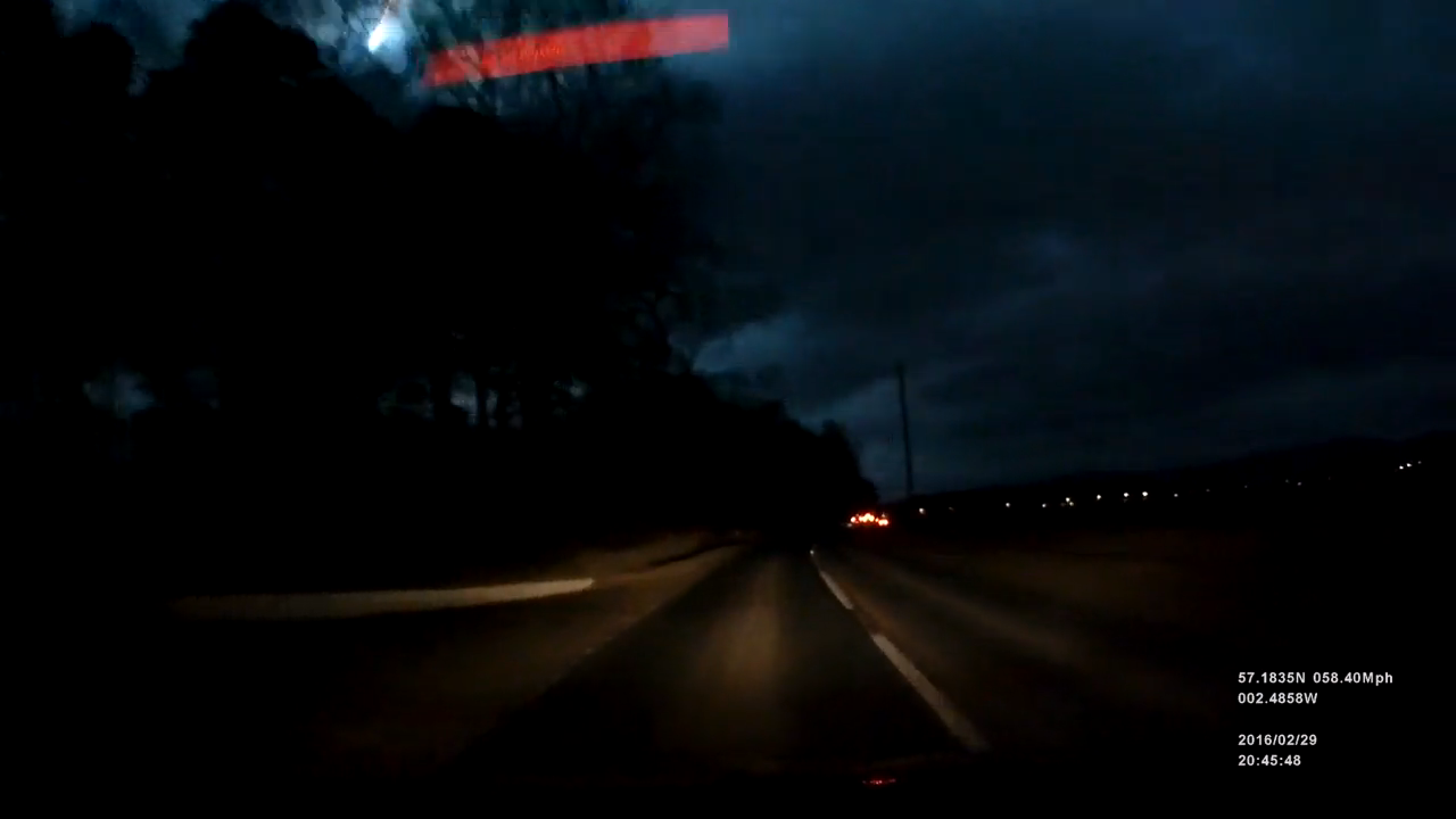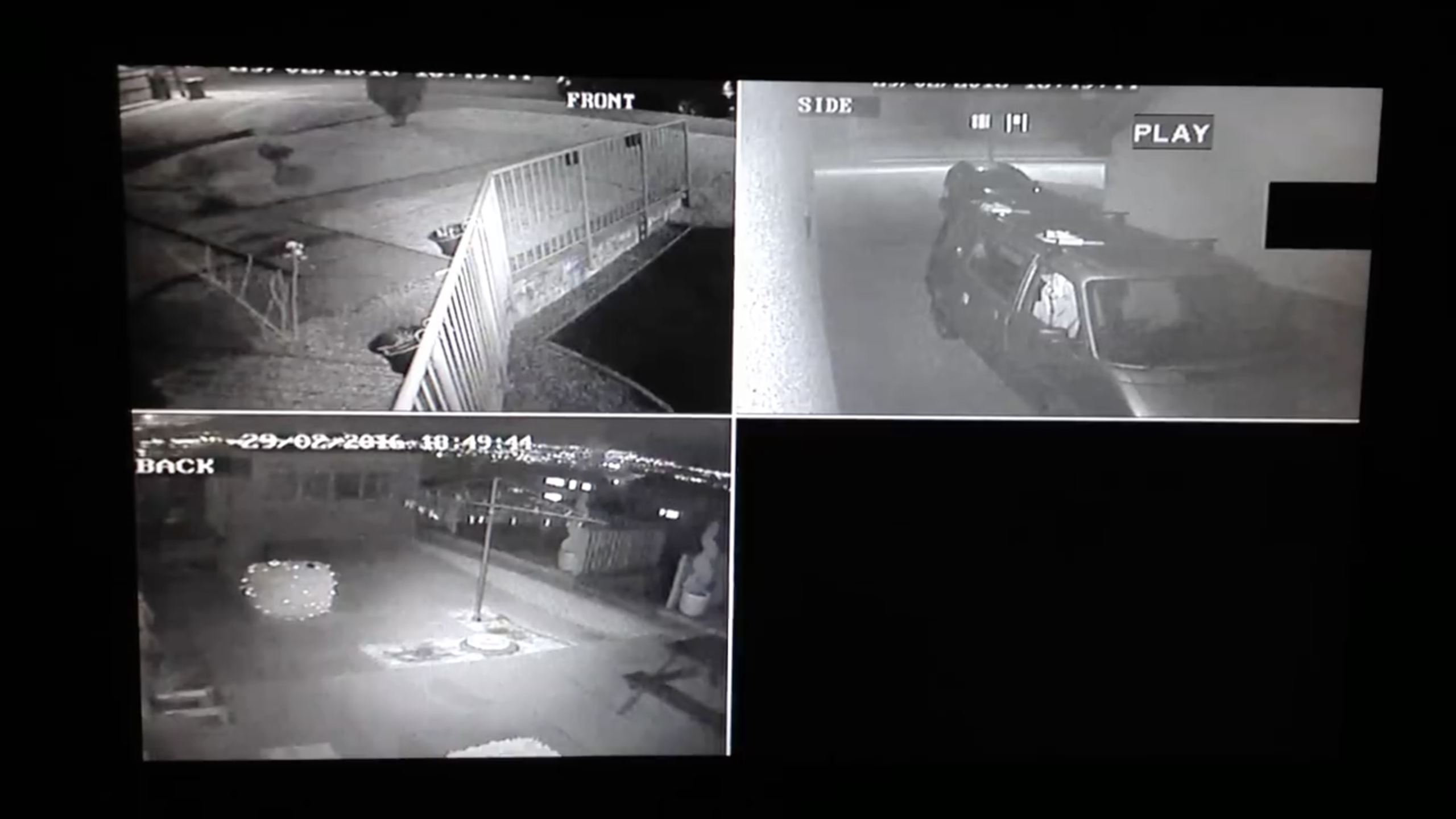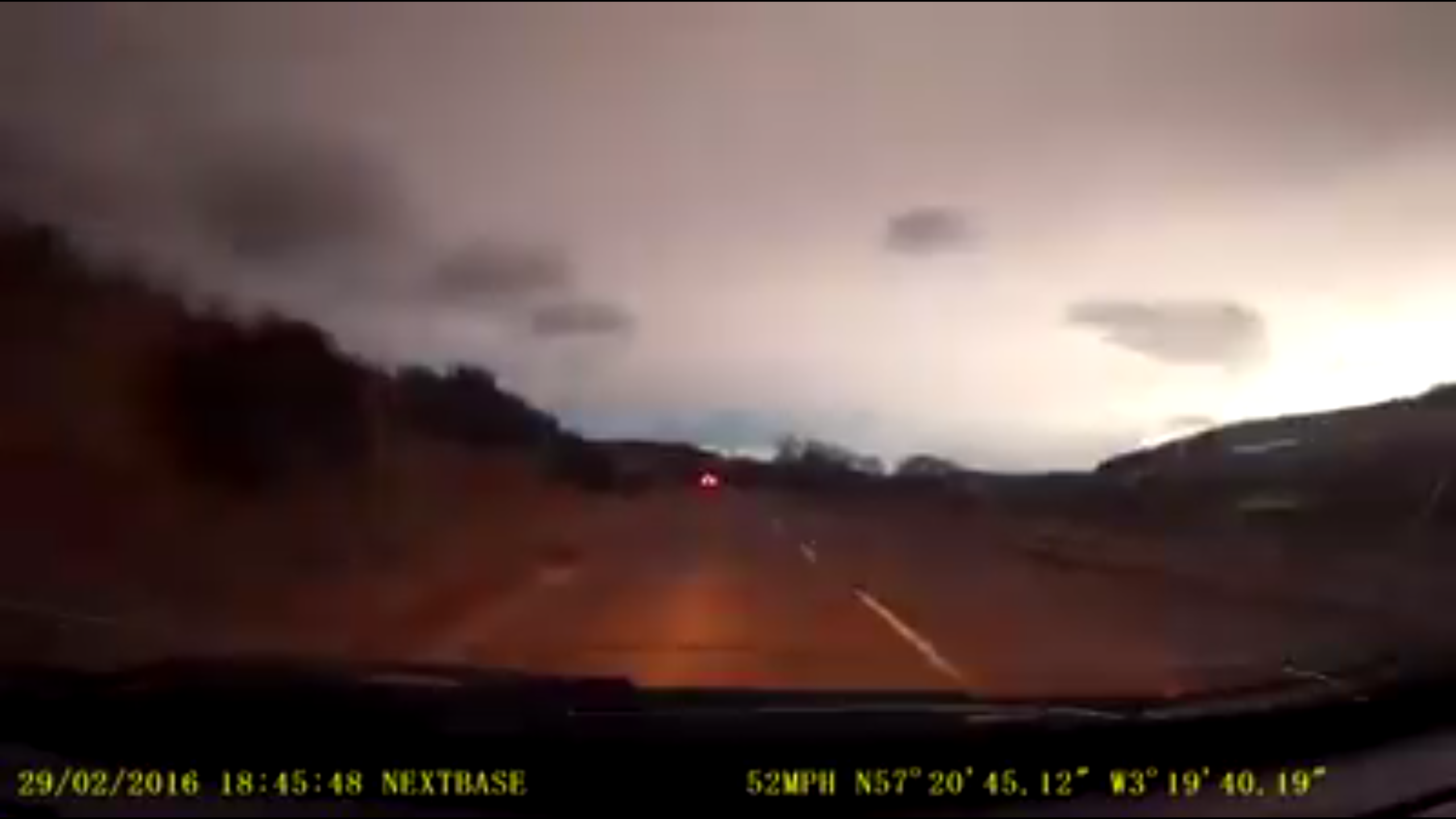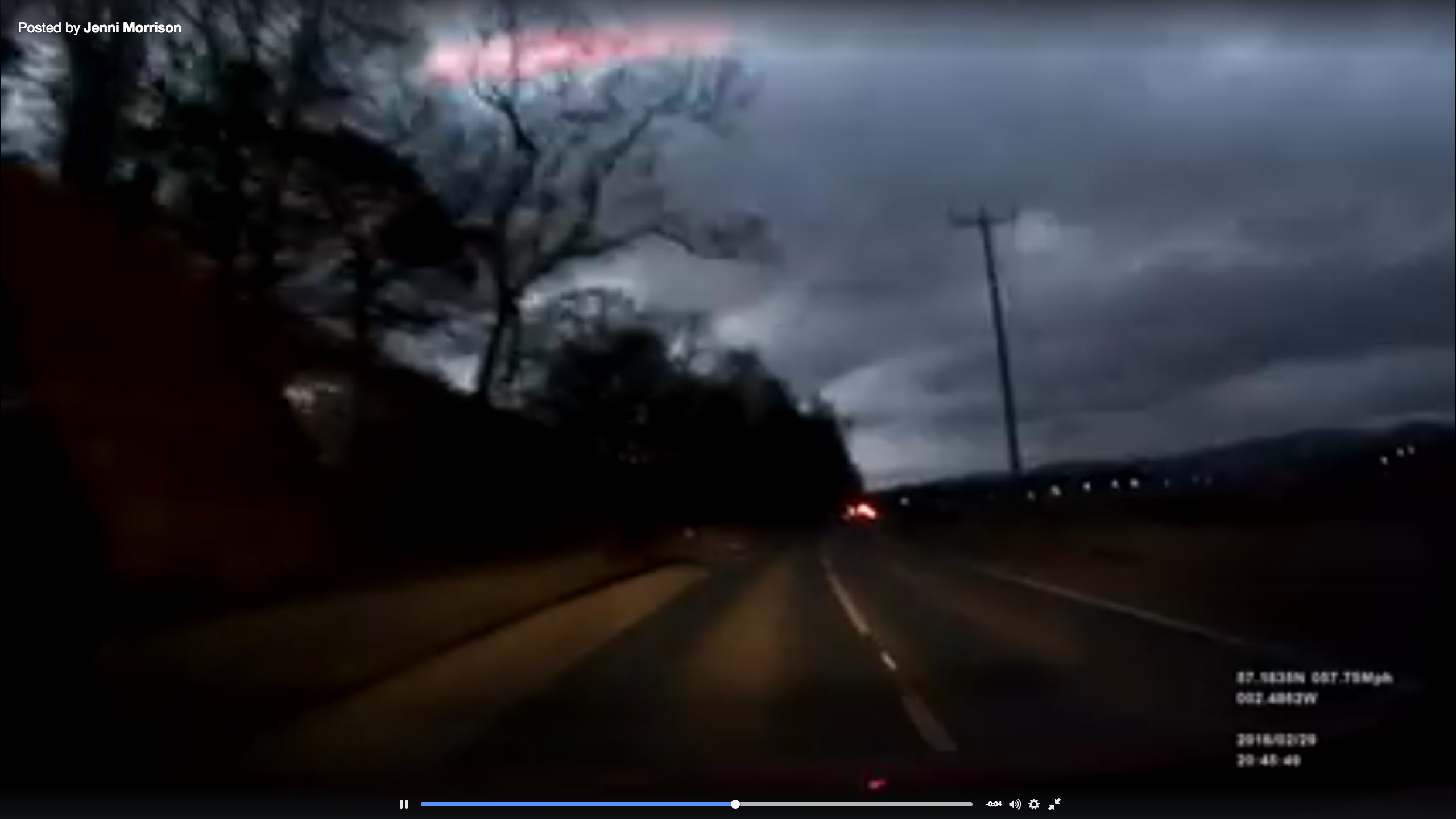A huge flash of bright light that illuminated the skies over the north of Scotland on Monday night was probably an “exploding meteor”.
Thousands of people spotted the “big white flash” as far afield as Inverness, Forres, Kinloss, Laurencekirk and even Lumphanan at about 6.45pm.
People took to social media just to check they were not the only ones who had seen it, and described it lighting up the sky “like daylight”.
Many reported it had been followed by about 10 seconds of “massive rumbling” that even caused buildings to shake.
Torcuill Torrance, of the Aberdeen Astronomical Society, said it had most likely been an exploding meteor. He said: “The highest probability is that there has been an exploding meteor which has entered the atmosphere, heated up a lot and exploded.
“This took place at 6.45pm and 46 seconds.
“It must have been a fair size to have been heard.”
Gerry Gaitens, of Highlands Astronomical Society, did not spot the spectacle but suggested it may have been a low-lying star.
He said: “One regular culprit is Sirius, the brightest star in the sky which can confuse people particularly as it is quite low to the south.
“The fact that it is fairly low means that its light comes through the thickest part of the atmosphere, which in turn causes the star to scintillate, producing flashes of colour in the process.
“Jupiter is also low in the sky just now, and it is also quite a bright object.”
Among those who did witness the flash was Highland councillor Ken Gowans, who was in Westhill at the time.
He said: “I was standing in my upstairs room on the phone, blethering away and the next thing there was this big flash.
“It was a fair size, and a light, greeny colour. I phoned the police.
“They said they had received numerous reports of it. It was almost due south from where I am in Westhill.
“This thing was massive – but there was no sound.”
Anyone local just see a bright flash lighting up whole sky. Not lightning. Reports of brilliant meteor like object.
— John Poyner (@rothiemoon) February 29, 2016
Did anyone else see that big white flash in the sky about 20 minutes ago? (Coming into Inverness on A96)
— Jackie Hendry (@JackieHendrySNP) February 29, 2016
@rothiemoon I saw the flash, above Inverness viewed from Muir of Ord, just as I was closing the curtain.
— Calum Macaulay (@calumsmac) February 29, 2016
And one mum in Alford said her daughter and yoga teacher had watched a “big purple ball of fire” lit up the sky in Alford, Aberdeenshire.
They reported that it had landed in the field behind the new academy, while several others believed they had seen it come down in Lhanbryde.
Social media soon erupted as people who had witnessed it started debating what had caused the flash.
Several people tweeted the Royal Astronomical
Society in hope of finding some explanation for the phenomenon.
Conor O’Hara messaged: “6.50pm report long flashes of light above Inverness. Sustained one to three second flashes across sky. Daylight colours. No thunder?”
John Poyner asked his followers: “Anyone local just see a bright flash lighting up whole sky? Not lightning. Reports of brilliant meteor like object.”
Calum Macaulay said: “I saw the flash, above Inverness viewed from Muir of Ord, just as I was closing the curtain.”
And the phenomenon was not confined to the north of Scotland as far south as Stirling.
Exploding meteor: The science
A meteroid is a particle which has broken off from an asteroid or comet orbiting the sun which bursts and enters the earth’s atmosphere.
The flash of light which is caused is a meteor.
If a meteroid the earth’s surface without disintegrating it becomes a meteorite.
Meteors are visible because the friction caused by the air particles heats them up and so they glow and leave behind a trail of gas.
Some of these can glow for several minutes but most disintegrate after a few seconds.
Meteroids are made of dust and ice from the trail of comets.



